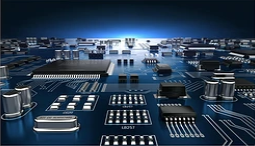The following is an introduction on how to measure and set the temperature of the HotBar in PCBA:
Some friends on the Internet seem to have a certain degree of misunderstanding about the temperature setting of the HotBar thermal head (thermodes) and the actual measured temperature.
Some people think that as long as the temperature of the HotBar is set at 400°C, the temperature of the hot press head must reach this temperature to be normal, but the actual temperature on the measured board is only about 280°C, so they have questions. To actually measure the temperature of the thermal head.
In fact, this is due to the misunderstanding caused by not fully understanding the design and principle of the HotBar machine. To make a metaphor, when we set the temperature of the soldering iron at 400°C, the actual temperature can really be reached, but when we When the soldering iron is placed on the soldering tin and parts, since the temperature of the soldering tin and parts is close to room temperature, the actual temperature of the soldering iron tip to the soldering tin and parts does not reach 400°C, generally it may be about 260°C, and SAC305 The melting point of solder is only 217°C, so it can be melted for soldering.

However, if the PCB pad has a large piece of grounding copper foil, the temperature loss of the soldering iron tip will grow exponentially, and sometimes it may even cause false soldering problems or failures. Upper tin.
Looking back at HotBar’s thermal head for the same reason, although it is set to 400°C, after actually contacting the PCB solder pad, the temperature that is actually transmitted to the solder paste will not really be as high as 400°C. If it is so At high temperatures, many electronic components and circuit boards should not be able to withstand such temperatures. This is because the conduction of heat will attenuate with time and distance.
The temperature curve setting of HotBar is recommended to be measured once according to the temperature curve of PCBA Reflow, and it is better to choose at least three solder pads (grounding soldering pad, power soldering pad, ordinary soldering pad) when measuring temperature, because of grounding The soldering pads of the power supply and the power supply are usually connected to a large piece of copper foil, which is prone to heat loss. The connection of ordinary soldering pads is to avoid the problem of scorching caused by setting the temperature too high.
How to measure and set the temperature of HotBar
Regarding HotBar machine settings, there are basically at least two settings, and each stage can set its temperature and time by itself, which is somewhat similar to a reflow oven with two temperature zones. This is one of the reasons why the welding time of HotBar can be shortened so short. And the relationship between temperature and time, basically when the pulse current on the HotBar machine is turned on, it will heat at full speed until the set temperature and time, but the temperature here is measured by the thermal head, not on the PCB circuit board. Soldering, so the temperature setting must be much higher than the melting temperature (217°C). This is similar to the reflow temperature setting, which is basically higher than the actual measured temperature.
The purpose of the first stage of heating is to preheat, which is generally set at about 150°C~170°C, and this temperature is also the temperature that the general soft board (FPC) can withstand for a long time without damaging its structure. In about 2 to 3 seconds, let the temperature of the soft board, solder paste and circuit board be heated to a certain level to avoid unpredictable problems caused by rapid temperature rise, such as de-lamination, and It can also have the effect of repelling water vapor. In addition, consider whether the solder pad (pad) of HotBar-FPC is exposed to the back. If it is a single-layer board and there is no solder pad on the back, it will be very unfavorable for heat conduction to the solder paste. At this time, it may be necessary to increase Preheat temperature.
The second stage is the temperature of the real solder. Therefore, the temperature of lead-free solder is generally set at 360°C~400°C. The actual temperature of the solder must be within 230~250°C before the melting can be determined. The tin will not scorch the soft board. The time is generally set between 4 and 8 seconds. It is recommended to determine the temperature and time settings of each stage after actually measuring the temperature curve according to the characteristics of each board. .
Finally, I also adapt to emphasize that the temperature measurement required for HotBar solder should be the temperature on the solder paste solder joints of the PCB, and this is also the actual temperature conducted to the PCB after the thermal head is heated, and it is the temperature when the solder is actually soldered. Therefore, to measure the temperature curve of HotBar generally, the thermal couple must be connected to the HotBar pad of the PCB, and then the PCB board is actually heated by the thermal head, so that the measured temperature is the temperature that can be used for soldering.